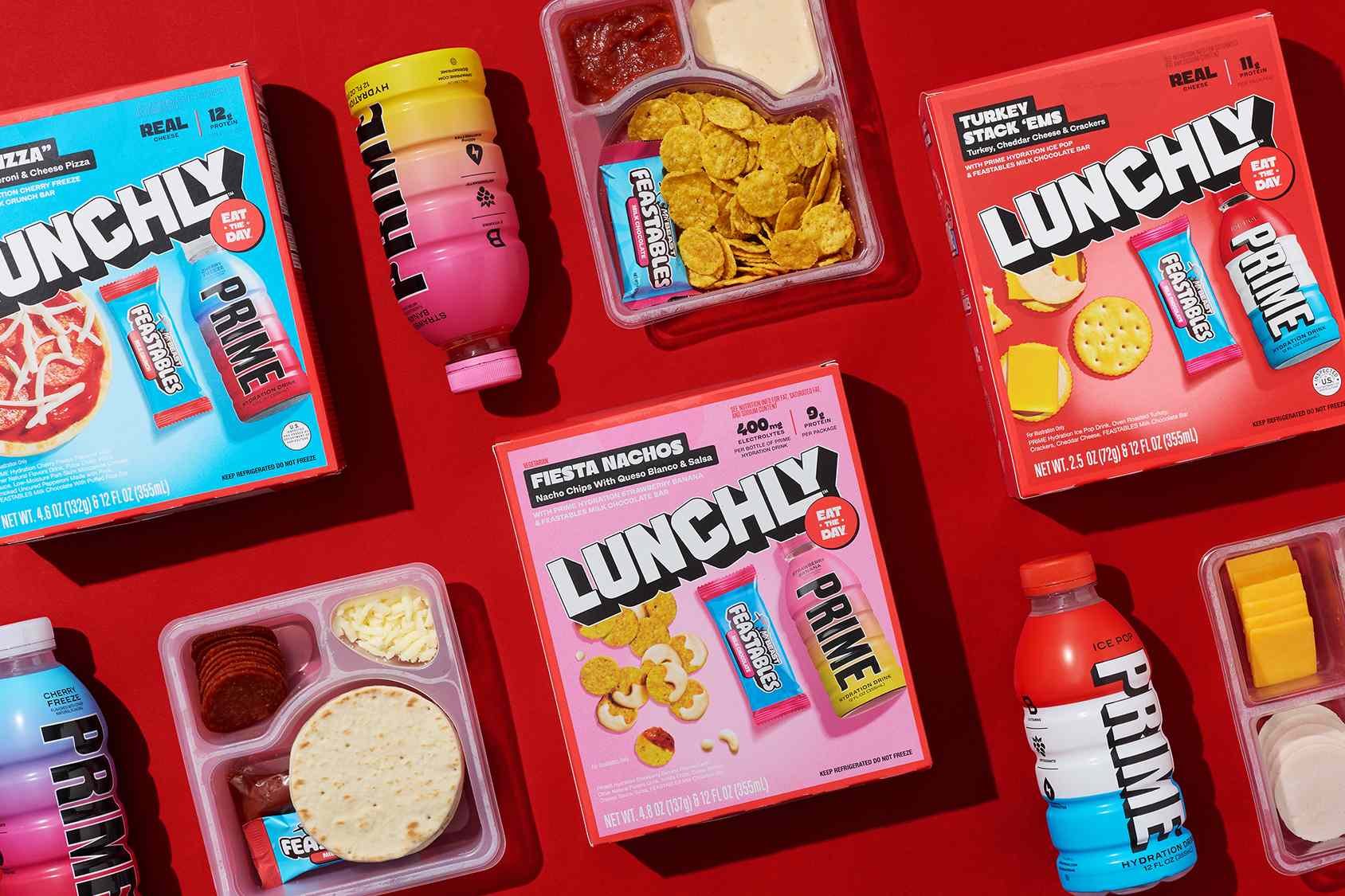:max_bytes(150000):strip_icc():format(jpeg)/Consumer-Reports-Investigates-Whats-Really-Inside-Healthier-Lunchly-Kits-FT-BLOG0725-9bea32734f814a189aef3417d81a53a4.jpg)
- Consumer Reports found concerning levels of lead in some Lunchly kits, with certain products containing up to 50% of the daily limit.
- Phthalates, endocrine-disrupting chemicals linked to health risks, were also detected, likely from packaging or processing, along with low levels of arsenic.
- Nutritional analysis revealed that Lunchly’s kits are not significantly healthier than Lunchables, with similar levels of sodium, fat, and calories. Their lower sugar content mainly comes from using sugar substitutes in their drink offering, Prime Hydration.
Perhaps your kid’s (or your own) favorite influencer persuaded you to toss creator-made Lunchly into your weekly shopping cart.
With its bright, playful packaging and promise to “have fun for lunch,” it’s an easy sell — especially for busy parents looking for convenience. But on Thursday, Consumer Reports released a new investigation into Lunchly, the prepackaged lunch kit marketing itself as a healthier alternative to Lunchables. And the findings might give you pause.
Consumer Reports carried out a thorough investigation of Lunchly lunch kits, similar to its previous tests on Lunchables and other ready-to-eat lunch options. The team tested Lunchly products for contaminants, including heavy metals like arsenic, cadmium, lead, and mercury, James E. Rogers, Ph.D., tells Food & Wine.
“We looked at phthalates, which are plasticizers used either in the packaging itself or that can contaminate food during manufacturing; they’re endocrine disruptors,” he adds.
Rogers, who oversees product and food safety research at Consumer Reports, explains that the team also conducted a nutritional analysis to verify whether the actual sodium content matched what’s listed on the packaging. “We also looked at fiber, total sugars, carbohydrates, and protein amounts.”
What did Consumer Reports find?
And what Consumer Reports found raised some serious red flags. When looking at the three heavy metals, “it was lead that concerned us the most,” says Rogers. He points out that some of the kits contained up to “50% of the daily limit for lead.”
“Knowing that kids can pick up lead from their environment or from other foods, they could easily get over the daily amount of lead they should be exposed to,” he says. Interestingly, lead levels were even higher in two of the Lunchly products compared to Lunchables, despite Lunchly’s claims of being the healthier option. Yet, there’s no safe level of lead, according to Rogers. As for other heavy metals, the non-profit organization found low levels of arsenic and no detectable mercury in the kits.
The team also found phthalates in the Lunchly kits. Although these chemicals, which often transfer from plastic packaging or during manufacturing, are nearly impossible to eliminate completely, Rogers says they should be limited because they have been linked to serious health risks. While the levels detected weren’t as high as those found in other products, it’s still concerning.
James E. Rogers, Ph.D., director of product and food safety at Consumer Reports
Lunchly said that it was better than Lunchables, but in our testing, they aren’t better. One of the issues is that the product is a highly processed food, and studies have shown that processed foods are not good for you.
— James E. Rogers, Ph.D., director of product and food safety at Consumer Reports
When assessing the nutritional profile, Lunchly didn’t stand out as any healthier than Lunchables. Side by side — comparing calories, total fat, saturated fat, carbohydrates, protein, and sodium — they were roughly similar. The only notable difference was in added sugars.
“Lunchly’s claims, like its kits being lower in sugar, are technically accurate. But when you consider the overall nutritional picture, Lunchly kits aren’t healthier,” says Amy Keating, RD, leader of Consumer Reports’ test program.
For example, Lunchly’s pizza kit contained seven grams of added sugar compared to Lunchables’ 16 grams. However, as CR points out, this difference is likely due to the drinks included in each kit: Lunchly’s comes with Prime Hydration, which uses sugar substitutes, while Lunchables includes Capri Sun, which contains added sugar. For reference, the 2020–2025 Dietary Guidelines for Americans recommend limiting added sugar to no more than 10 percent of daily calories and for children to avoid beverages with added sugar.
CR also found that Lunchly kits, like Lunchables, pack in a significant amount of sodium — ranging from about a third to nearly half of a child’s recommended daily intake. And like most U.S. adults, kids are overdoing it in the sodium department: an estimated nine in 10 U.S. children eat more than the recommended amount, according to the Centers for Disease Control and Prevention (CDC) — a risk factor for high blood pressure.
The bottom line: “Lunchly had said that it was better than Lunchables, but in our testing, they aren’t better. They have issues themselves,” Rogers tells us. “One of the issues is that the product is a highly processed food, and studies have shown that processed foods are not good for you.”
What did Lunchly have to say about Consumer Reports’ findings? They said they didn’t believe that CR’s testing provided reliable data and mentioned that they regularly test for heavy metals themselves, which they claim are “naturally occurring and often in a variety of foods.”
What lunch alternatives should parents pack for their kids instead?
So, what should parents do when their kid is begging for a fun lunch like Lunchly? Rogers says it’s fine to let your child enjoy a lunch kit every once in a while as an “occasional treat” — but it shouldn’t become a daily habit. “Parents should still make sure their kids get a balanced diet with plenty of fresh fruits and vegetables and actually make their lunches and send them to school filled with healthier products,” he says.
One idea: get kids involved in making their own healthier DIY lunch. Use a bento box and let your kiddo fill half the compartment with colorful fruits and vegetables like berries, cherry tomatoes, carrots, snap peas, cucumbers, and orange slices. Set aside a quarter for whole grains like a whole-wheat wrap, pasta, or brown rice. The remaining quarter can be for a protein source like grilled chicken, fish, hard-boiled eggs, beans, or a small handful of nuts and seeds. You might be surprised — your kids could enjoy the fun of mixing, matching, and personalizing their own lunchbox.

